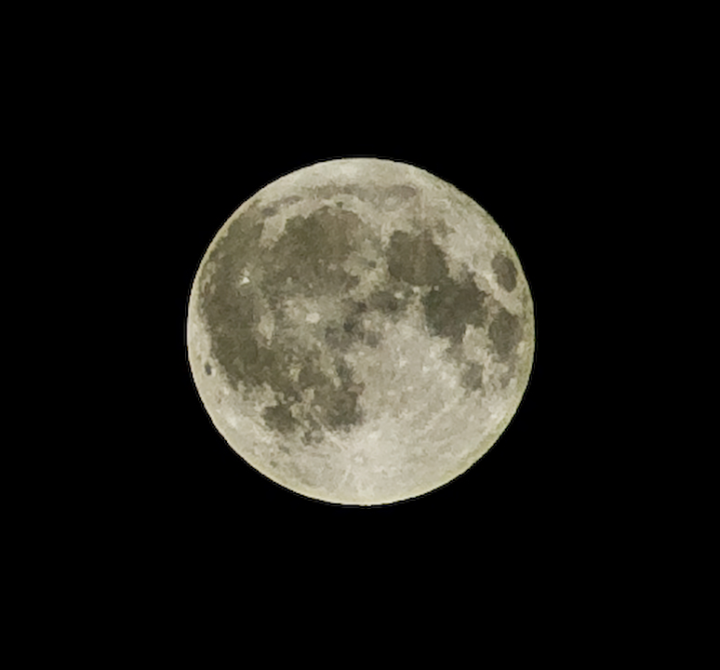
I was coming home from a late night out and the moon hung full, bright in the windshield. I’ve tried to photograph it so many times over the years and generally failed. Finally, a partial success, which I’ll indulge myself by sharing with the Net.
This is with the old pre-digital Tamron 70-210mm f/3.5, cranked to the max of course. You might want to click to enlarge.
The problem is that the moon is a light-coloured fully-sunlit object, but surrounded by so much blackness that your camera’s built-in light meter has a really tough problem. So what I did was set the ISO to 800, the aperture to f/8, and shot at every speed between 1/60 and 1/1000. This is the last, a thousandth of a second, which means that I could have used a way lower ISO setting. Pale sunlit object, remember.
In the interest of honesty, I should say Lightroomed heavily. I wonder if that’ll become a verb like Photoshop has? Feels awkward at the moment.
Comment feed for ongoing:
From: Joe Cheng (Jul 30 2007, at 02:44)
Mikkel Aaland was just wondering the same thing:
http://www.oreillynet.com/digitalmedia/blog/2007/07/is_lightroom_a_verb_or_a_lifes_1.html
[link]
From: Janne (Jul 30 2007, at 06:02)
As you say, it's an object in direct sunlight. So, basically think high noon with not a cloud in the sky. Something like ISO100, F/8 and 1/160 or so should get you there.
[link]
From: Joshua E Cook (Jul 30 2007, at 06:02)
That’s a beautiful shot. I’ve always heard that you can follow the “sunny 16” rule for photographing the moon: set the aperture to ƒ/16 and the shutter speed to the reciprocal of your ISO. It sounds like you came very close to this “ideal” setting in your experimentation.
[link]
From: Colin Prince (Jul 30 2007, at 06:14)
Nice shot. Looks like you're getting the "Facet" effect there though. Is it the lens? Or do they have Facet in Lightroom too :)?
Colin
[link]
From: Steve (Jul 30 2007, at 10:41)
Why not just meter it and add two stops of light? It may come out a little bright, but that is effectivly what you do when photographing light objects. If you metered it at 160 at f8, an added stop would be 80 at f8 and to add another stop would be 40 at f8. (Every time you double or halve the speed is either subtracting or adding a stop) You most likely would not have had to do so much in lightroom.
[link]
From: Mark (Jul 30 2007, at 14:28)
You may be interested in these views of the moon, one from Toronto
[link]
From: BWJones (Jul 30 2007, at 14:41)
Tim,
I guess we were looking at the same moon:
http://prometheus.med.utah.edu/~bwjones/C1276349108/E20070730120521/index.html
[link]
From: M. David Peterson (Jul 30 2007, at 23:54)
Personally I like,
"Has it been lit?" or "It's been lit." rather than Lightroomed, but then again I prefer "chopped" instead of Photoshopped, and obviously Photoshopped is the clear winner of the noun-turned-verb through technological culture award, so I'm guessing Lightroomed will probably be the winner as well.
None-the-less, *GREAT* shot!
[link]
From: terry chay (Jul 31 2007, at 00:04)
Umm the Sunny f/16 rule would have solved your problem. Also, there is usually a spotmeter in most digicams ;-)
http://terrychay.com/blog/article/small-glass-big-glass.shtml
[link]